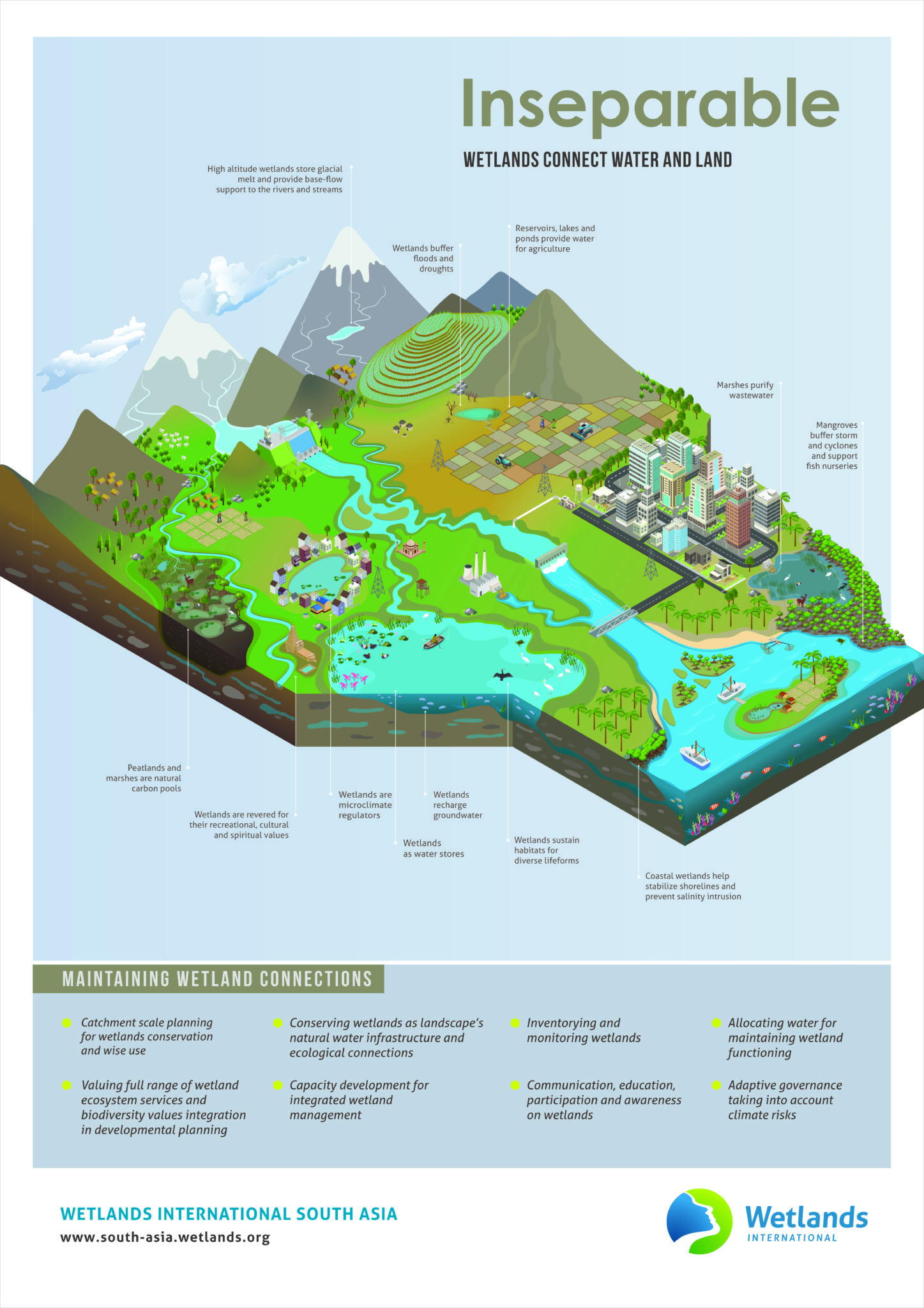
Valuing the water and wetlands connection – dedicated to World Water Day 2021
-
Integrating wetlands in water management
Wetlands have a significant role in ensuring water and climate security of India, given their role in the water cycle and multiple hydrological functions. The rapid loss of natural wetlands is as much a threat to water and climate security, as is an environmental crisis.
Wetlands, in their various occurrence, forms and characteristics, play an important role in the functioning of the water cycle. As water moves through the surface or underground, it passes through wetlands, which in turn regulate the quantity, quality and reliability of water. Wetlands provide vital water-related ecosystem services at different scales (for example clean water provision, wastewater treatment, groundwater replenishment) and thereby offer significant opportunities to address water management objectives with sustainable, and in several instances, cost-effective solutions.
The water sector for long has tended to overlook this interconnectedness, and at several instances, in an attempt to ‘develop’ these ecosystems, created several adverse ecological and socioeconomic impacts. India’s quest for sustainable development is closely hinged on achieving water system resilience. The historical divide between water and wetland sectors, is one of viewing water more narrowly from where it can be used, against a fuller understanding of how water moves in a landscape and performs various developmental and ecological functions shaping resilience. Communication between the two sectors can be bridged by wetlands managers articulating water needs and hydrological functions of wetlands in terms useful to water sector, and the latter, incorporating wetlands as nature-based solutions for meeting water management objectives.
The water resource challenge that India presently faces is not limited just to water allocation for various uses but is also about balancing water for food, development, nature and society. The current paradigms of managing water from where it is sourced (surface water or groundwater), where it is used (agriculture, water supply, hydropower and others), technology (dams, reservoirs, canals and tanks) and social equity (the share of accessible water to a particular societal group and geography), precludes a unified vision of water. Given the coupling between land use and water use decisions, the need to widen the scope of integrated water resources management to include land management aspects is pertinent.
Including wetlands in water management requires a collaborative and beyond sectoral disciplinary approach. The issue at hand is not just about connecting two different policy areas at a single hydrological (catchment) or administrative (district) scale. The role of collaborative governance solutions is crucial for addressing challenges associated with building coherent conceptual and methodological narratives (such as wetlands degradation not just seen as tantamount to loss of critical ecosystem services, but reduced landscape resiliency to increasing water risks), and developing approaches for joint working that have potential to transform, rather than simply reaffirm segmented ways of research on natural systems and landscapes.
Integration of wetlands in water management in also not about pitting grey and green infrastructure, but achieving complementarities and synergies. While making water infrastructure decisions, a beginning can be made by examining whether green infrastructure solutions such as wetlands can deliver the desired water resource outcome, and then filling the gap that may still exist by a grey-green combination. A harmonized understanding of wetlands and their hydrological functions in a landscape is the foundation step.
